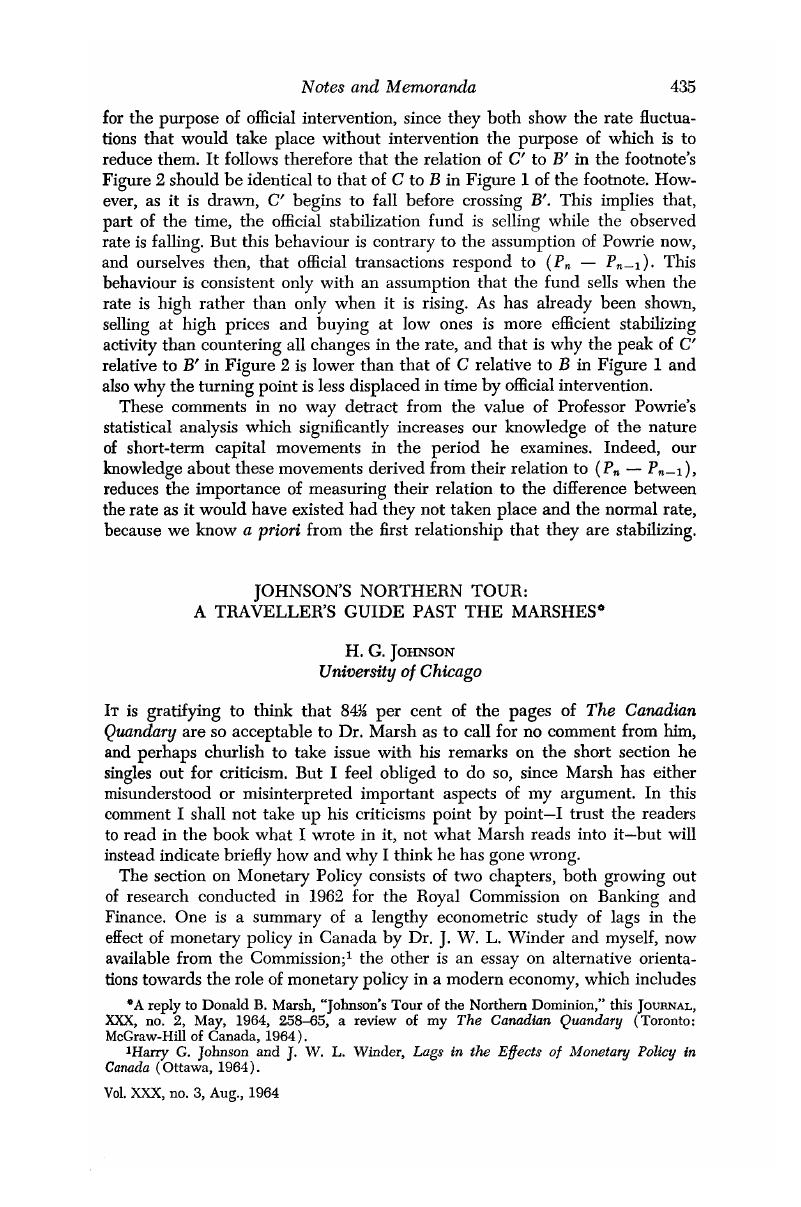No CrossRef data available.
Published online by Cambridge University Press: 07 November 2014

A reply to Donald B. Marsh, “Johnson's Tour of the Northern Dominion,” this Journal, XXX, no. 2, May, 1964, 258–65, a review of my The Canadian Quandary (Toronto: McGraw-Hill of Canada, 1964).
1 Johnson, Harry G. and Winder, J. W. L., Lags in the Effects of Monetary Policy in Canada (Ottawa, 1964).Google Scholar
2 Johnson, Harry G., “Monetary Theory and Policy,” American Economic Review, LII, no. 3, 06 1962, pp. 335–84.Google Scholar
3 For example, on the question of whether the presence of non-bank financial intermediaries makes for instability, see “Monetary Theory and Policy,” 373–4; Money and Credit: Their Influence on Jobs, Prices and Growth (Englewood Cliffs, 1961), 78–80 Google Scholar; Smith, W. L., “Financial Intermediaries and Monetary Controls,” Quarterly Journal of Economics, 73, no. 4, Nov., 1959, 533–53CrossRefGoogle Scholar; Shelby, D., “Some Implications of the Growth of Financial Intermediaries,” Journal of Finance, 13, no. 4, Dec., 1958, 527–41.CrossRefGoogle Scholar The last reference contains a proof of the proposition stated on p. 220, which Marsh regards as only “probably true”; though readers who are open-minded enough to consider that footnotes have a purpose should find the footnote on that page quite adequate.
4 Only in his footnote 9 does Marsh show awareness of what we were trying to measure; and nowhere does he indicate any understanding that this is what has to be measured for the purpose of evaluating monetary policy.
5 See, for example, E. C. Brown, R. M. Solow, A. Ando, and Kareken, J. H., “Lags in Fiscal and Monetary Policy,” in Stabilization Policies, Commission on Money and Credit (Englewood Cliffs, 1963)Google Scholar; Meigs, A. J., Free Reserves and the Money Supply (Chicago, 1962)Google Scholar; Horwich, George, “Elements of Timing and Response in the Balance Sheet of Banking, 1953–55,” Journal of Finance, XII, 05, 1957, 238–55Google Scholar; and Black, Robert P., “The Impact of Member Bank Reserves Upon the Money Supply,” Southern Economic Journal, XXIX, no. 3, Jan., 1963, 199–210.CrossRefGoogle Scholar